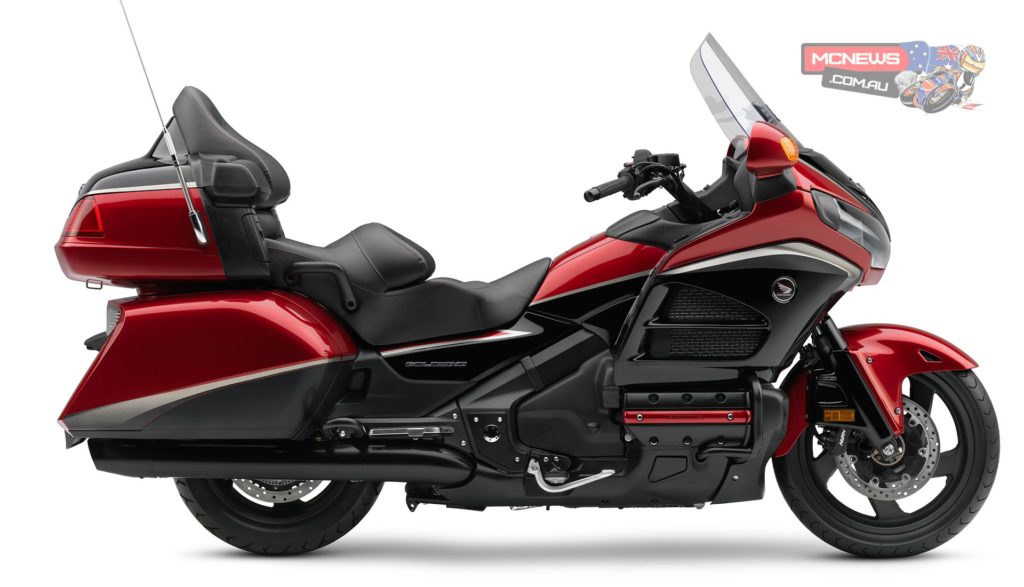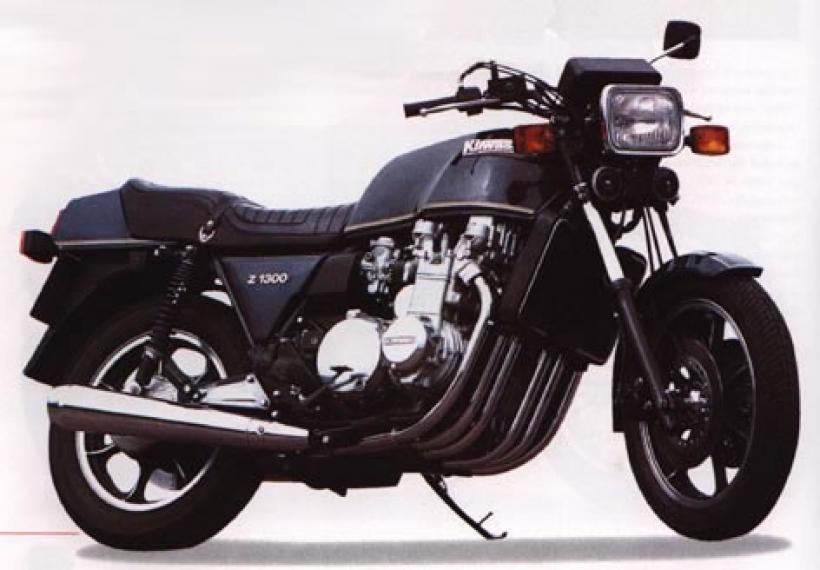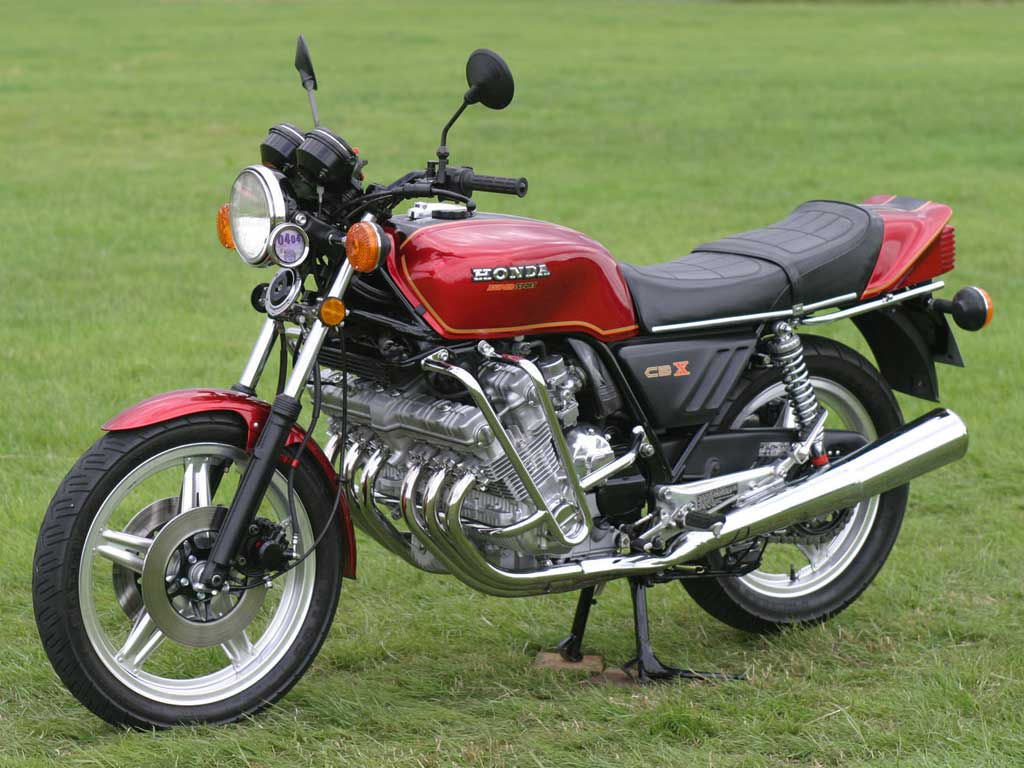Six-Cylinder motorcycles revisited
Part One – By Phil Hall
When I went to school “six of the best: meant a trip to the principal’s office for six slashes with the cane, three on each outstretched hand. Thankfully those days are past though my subsequent teaching career and my observations of the lack of discipline in most modern children has often led me to think that it mightn’t be such a good idea to re-introduce corporal punishment in schools. Hell, what they are doing now certainly isn’t working, is it?
But today I want to start a two-part series that looks at six cylinder motorcycles; some new, some old and some of almost mythical reputation. Of all the engine configurations applied to motorcycles over the years, the six cylinder has been the hardest to implement and sell to the general public. For a start, it is proportionately more expensive to produce. Its use makes for a wide bike with the attendant compromises in ground clearance. It makes the bike heavier and also more complex with attendant implications for servicing and costs. And it doesn’t necessarily bring with it the performance advantage that might be expected.
However, the designer must also wrestle with the advantages of the layout and consider whether they outweigh the disadvantages. First and foremost, the six cylinder layout brings with it the maximum advantage in smoothness with the inline engine producing the smallest amount of both primary and secondary vibrations. It makes for an engine that is less stressed than one with a smaller number of cylinders; the workload is spread over more components. And, most importantly, it makes for an engine and motorcycle that is almost unique and that has that “gee whizz” factor that the marketing people love so much.
So here, in no particular order (except for the one that I have chosen to be the undisputed #1) is my six of the best; the six best efforts in building a six cylinder motorcycle.
Honda Gold Wing GL1800

Introduced in the early noughties, an upgrade from the GL1500, the 1800 continues to be a catalogue model in Honda’s range and still sells well within its chosen sector, full dress touring. A direct descendent of Honda’s GL1100 Gold Wing from 1975, it continues the same basic layout while adding features, size, complication and, of course, weight. It features a horizontally opposed six cylinder engine with single overhead cams and two valves per cylinder. In its original iteration it was acknowledged that the engine drew much more of its DNA from Honda’s car division rather than its bike arm with most of its features looking far more car-like than bike-like.
Even in its original form the Gold Wing was heavy (spawning the “Lead Wing” moniker that has stuck to this day) and the current model is unconscionably heavy, complete with fairings, special seats, a mountain of electrical accessories as well as that huge engine, gearbox and shaft drive paraphernalia. Indeed, the 1800 even features an electric lift to get the bike onto the centrestand and the model has, for many years, featured a reverse gear so that the rider can extricate him/her self from a “parking nose down to the kerb” scenario.
Having said all that, the bike has a solid core of enthusiastic owners, mostly in the USA, its favoured market, and 1800’s can be regularly seen, chewing up endless miles along America’s interstates. For this purpose the bike is ideal, with comfortable seats, music on the move, copious storage options, buttery-smooth engine and all the mod-cons. If you are planning on doing huge numbers of miles and you want a bike that will cope with it all and not even breathe heavily, the GL1800 is your weapon of choice. With an options list that would make the Encyclopaedia Britannica look puny, make sure you have plenty of time to play the options game as well. And, make sure you have deep pockets, too. You won’t get much change out of 50 large if you want to put one on the road with all the “fruit”.
Kawasaki KZ1300 (also called the Z1300)

The 1300, known by many nicknames and different monikers depending on the market in which was was sold, was Kawasaki’s attempt to sell a superbike that built on the tradition of the legendary Z series but expanded it into the touring market. While they had produced a shaft drive 1000/4 for such purposes, Kawasaki, deeply enmeshed in the arms race that was the 70’s, saw what Honda had done with the CBX and answered in kind.
As Kawasaki had always tried to do what Honda had done but do it better, the 1300 was bigger in capacity than its main competitor, had a water-cooled engine to reduce operating temperature and noise and a shaft drive to emphasise its touring aspirations. Oddly for the time the engine was undersquare with the stroke being longer than the bore. This was done for two reasons, firstly to make the engine as narrow as possible and secondly to emphasise torque over horsepower, an important aspect when building a touring bike. Kawasaki was successful in both areas but it did have the effect of reducing the engine’s ability to rev hard though, with 120bhp off the showroom floor, that criticism does seem rather churlish. It also impacted upon fuel consumption, a criticism of the model throughout its long production history (1979-1989)
The “Pipe Organ” to use another of its nicknames was fast but at the same time, ponderous. It handled poorly with a lot of the weight up high due to the tall engine. Contemporary road testers criticised its price (expensive), its fuel consumption (poor) and its handling (diabolical). Despite all this, and with the need to “fly the flag”, attempts were made to actually race what was never intended to be a racing, or even sports bike, the most notable attempt being here in Australia. In 1979 a well funded team entered two pipe organs for the Bathurst races at Easter time. One was to be ridden by the Kiwi ace, Graeme Crosby and the other by one of the Blanco brothers (sorry, I can’t remember which one). However, after the first practice session, Croz returned the bike to the pits, jumped off and threw the bike against the wall of the tent, muttering in terms that were undeniable in their meaning and unrepeatable here that he wasn’t going to ride that *&&^%^%$ thing.
With numerous Honda CBX’s still entered and circulating, it was vital for Kawasaki to find a good rider to replace him, and find one they did. The by-now legendary Kawasaki stalwart, Gary Thomas (Chesterfield Superbike, remember?) was drafted in and quite unwittingly helped to tell one of the great Bathurst stories. The Production Race soon became a brawl between Thomas on the amazing six and Honda’s trump card, Tony Hatton on a more conventional CB900/4 Bol d ‘Or. Rumours and protestations continue to this day concerning the legality of Hatton’s mount but, that aside, the race was a cracker. Against all the odds, Thommo took it to Hatton and made old 55 pull out every bit of skill and daring that he possessed. Gary was blindingly fast on the two long Bathurst straights, leaving Hatton in his wake. But, over the top of the mountain in the twisty bits, Hatton regained the ascendency as the Kawasaki added lightness by grinding large parts of its undercarriage away on the unforgiving track surface. Hatton, cagy devil that he was (still is), waited till the end and, knowing that the big heavy K was running out of brakes at the end of Conrod Straight, he pulled out and executed the perfect inside pass and won the sprint to the line.
It was an amazing race and prompted the Crawford brothers to use the bikes again in further races, but never with the success that Thomas had achieved that day.
For all of its mystique, however, it always seemed odd that Kawasaki didn’t make the 1300 into a “proper” touring bike from the outset, with a fairing and integrated luggage. Later they did so and the bike sold well. Fuel injection was added which helped a little with the fuel usage issue and air-assisted suspension also helped to cure some of the handling ills. As the “Voyager,” it did a little better and continued till production ceased some ten years after it had begun.
Mention should also be made, perhaps of the Millyard 2600, a special pipe organ built by a British nutter who grafted two 1300 engines onto a common crankshaft to make a V12 motorcycle that actually runs and is, according to those who know, quite enjoyable to ride.
Honda CBX 1000

Always mindful of its position as world market leader, Honda was ever on the lookout for ways of trumping whatever the opposition was doing or was planning to do. Still smarting from Kawasaki’s trumping of their flagship bike, the 750/4 with the Z1, the Japanese obsession with not losing face ruled the design and marketing arms of Honda for decades to come. And it was this obsession with being the technological leader, of having the bike that said “take that” that led to the introduction of the CBX.
Honda’s history of producing small-capacity, high-revving multi-cylinder engines went right back to the beginning so it was a natural outgrowth of that that saw them debut the CBX1000 in 1978. Here was Honda’s new flagship, the bike that bundled into one machine, all the technological “whizz bang” that the company had learned in the last 20 years. A six cylinder across-the-frame engine, DOHC, four valves per cylinder, six-into-two exhaust pipes all enclosed in a special frame and equipped with the latest gadgets. Honda’s Comstar wheels were fitted as well as the usual two-part alloy handlebars and racing-inspired instrumentation.
Honda avoided the trap of building a bike that could go fast in a straight line (it could) but not go around corners, by making the engine as narrow as it could be at the crankcase level. The alternator and ignition components were moved from their usual places at each end of the crankshaft and were, instead, mounted on top of the gearbox behind the cylinders and run by a jackshaft. Consequently, while stunningly wide at the cylinder head (sit on one and you’ll see what I mean), the CBX engine was actually narrower at the crankcase than the 900cc four cylinder engine!
With Honda taking a beating on the race track from Kawasaki (still), the CBX seemed just perfect. Though the front forks were very thin and the Honda shock absorbers not known for quality, yet the CBX was rushed to the track where it rewarded Honda immediately. Straight out of the box, Michael Cole won the Calder Two Hour production race on debut, the first race and the first win for the model anywhere in the world. Later, Kiwi ace, Graeme Crosby (there’s that name again), put the CBX on pole for the Castrol Six Hour Race at Sydney’s Amaroo Park, an amazing achievement around the tight 1.9km layout.
The CBX was a stunning road bike. It was hideously quick for its day and so smooth that a new word should have been coined to describe it. Its handling could certainly have been better, Honda having put most of their attention towards the engine, not the running gear and it positively ate up the miles, getting the rider to his destination in comfort from the wide and generous saddle. And the sound of the six cylinder engine wailing away near the top end of the tacho was something that listeners cherished forever.
But, as is so often the case, it was a bike whose time came and went astonishingly quickly. From being the king of the superbike heap, the CBX was deposed almost immediately but the upstart Suzuki GS1000 which, despite possessing none of the technological gee-whizz of the CBX, did everything that it did, did it better, was cheaper, and possessed superior running gear.
Honda responded by introducing a “softer” version of the 1000, equipped with a fairing a-la the Honda Bol d ‘or, integrated panniers and a suspension upgrade incorporating Honda’s new Pro-Link single shock rear suspension and air-assisted forks on the front. It also featured ventilated disk brakes to help stop its increased weight.
Five years after its release the CBX was gone, replaced by a new generation of bikes building on the technology that it had pioneered. Like the Z1300, CBX’s are still highly prized with collectors paying extraordinary sums to purchase and then cherish these landmark bikes from the two big Japanese manufacturers.
I must close with my own CBX story. At Macarthur Park during the running of the closed public road races there, Graeme Crosby had bought down to Canberra (ridden, actually) the CBX that he was going to ride in the Six Hour a couple of weeks after our event. As the 350 A Grade race took to the track I noticed Graeme sitting on the bike on the edge of the track watching the race. He wasn’t wearing a helmet and had obviously ridden up to the edge of the track from the pits that were on the infield of the circuit. The race was a cracker with Wayne Gardner of the Karl Praml TZ350 being harassed by the local favourite, Murray Ogilvie. Despite being very much a privateer, Murray took it right to the young star and eventually finished a very close second. As the bikes went through their slow-down lap, I sprinted across the track to where Croz was sitting and asked him if he’d give me a lift back to the pits so I could congratulate Murray, CRRC’s lead rider. “Sure, mate, hop on.”
So I did, no helmet (a sombrero, actually) and clutching my programme and a bag of camera and other gear. Graeme clicked the bike into gear and proceeded to RACE back to the pits, using the network of footpaths that criss-crossed the infield. These were overgrown with grass some metre high and featured many 90 degree intersections. Regardless of this, Crosby hounded the CBX through the maze, barely slowing for the corners which I still don’t know how he even SAW, let alone knew where they went. A couple of minutes (it seemed like hours), we arrived at the pits and I staggered off the pillion seat, “You right, mate?” “Um, yes, I think so, thanks.” I lurched off to Murray’s pit on jelly legs and sat down. A memory that will stay with me forever.
Next up I’ll look at the other three six cylinder bikes that make up my six of the best.























